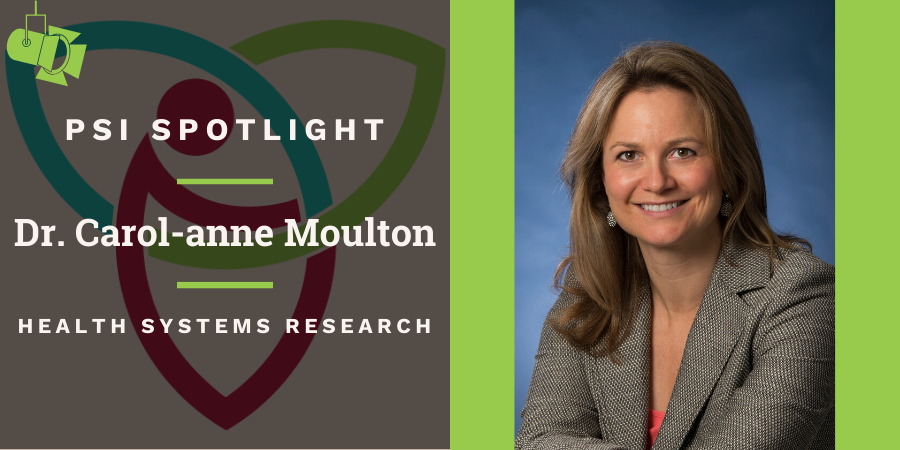“PSI Foundation has always been supportive of this kind of research. They give you the freedom to study the things you know are important, but that other agencies may not see as under their purview. They trust you as a clinician that you know what’s important.” – Dr. Carol-anne Moulton
Checklists have been praised as a simple and cost-effective way to improve patient safety. But can they be implemented in an operating room (OR) without considering a hospital’s surgical culture?
A landmark paper published in 2009 demonstrated that a simple surgical safety checklist (SCC) cut morbidity and mortality around the time of surgery by about one third. Within just a few years, governments in many jurisdictions – including the Ontario provincial government – required all hospitals to implement a similar checklist in their operating rooms. Very quickly, the SSC shifted from a recommended tool designed to improve patient care to a mandatory policy, deeply enmeshed in hospital politics. Dr. Carol-anne Moulton, a staff surgeon and medical director of the OR at Toronto General Hospital and Princess Margaret Cancer Centre, had some questions about the SSC, the claims that had been made about its impact on patient care, and the ways its implementation had – or had not – changed practice in the OR over the past decade.
“There’s an assumption that if we say something is for patient safety, people will just do it, but this isn’t the case,” she says. “Surgeons and medical staff care about patient safety, but we need to question how we bring safety initiatives into a culture or institution so they work the way we want them to.”
Using her research experience in studying surgical judgment, Dr. Moulton, along with sociologist Dr. Elise Paradis and anthropologist Melanie Hammond Mobilio, studied the culture of the operating room with respect to the checklist. With PSI Foundation funding, they focused on the practices at one Ontario hospital, observing surgeries, interviewing operating room team members, and conducting staff surveys.
Their findings revealed a lack of clarity around what it means to “do the checklist.” For some, the checklist is understood as the physical piece of paper (i.e., the tool itself), while for others, the checklist is understood more broadly as a practice loosely tied but not limited to the physical checklist. This key finding raised further questions around compliance rates. Despite the study site having a reported compliance rate of nearly 100%, the physical checklist was rarely used. Instead, OR teams used different processes – often dependent on the expertise and preferences of the surgeon or the workflow of the surgery – that acted as some version of the checklist, though without the standardization one might expect from checklist-based practice.
They also found that the checklist itself did not inherently foster teamwork, despite the claims made by some checklist advocates. Surgical culture, including existing power dynamics and institutional structural issues (e.g., staff changes over a case due to breaks), limited the sense of a cohesive team in ways that could not be easily corrected by a single intervention. And the lack of clarity around exactly what “doing the checklist” meant, coupled with a reporting system designed to report quantifiable compliance rates to the Ministry of Health and Long-term Care, added to the complexity around a seemingly “simple” intervention.
The qualitative data the team collected during the study helps to describe some of the main challenges surrounding implementation of the checklist. “The study highlights the need to think about these issues at a deeper level,” says Dr. Moulton. “Understanding the culture is critical and doing something about it is really slow and hard. There is no quick fix, and hospitals need to dedicate resources to actually improving the situation.”
Despite the challenges of checklists, Dr. Moulton believes that they can be effective tools to improve patient safety – if the culture of the OR is considered during design and implementation. She hopes that her research keeps the conversation about the SSC and its value going among OR personnel and hospital leadership.
“The work challenges people to see that we may not be as good as we say we are,” she says. “There’s nothing wrong with declaring it, and we have to understand it if we’re going to get better.”



